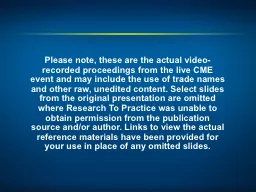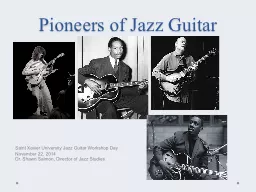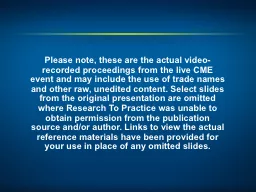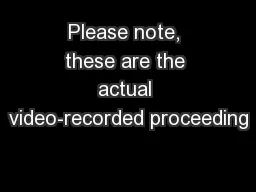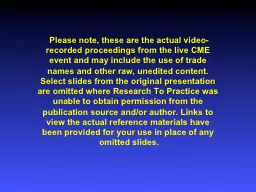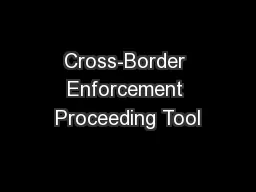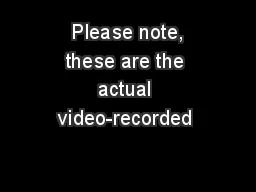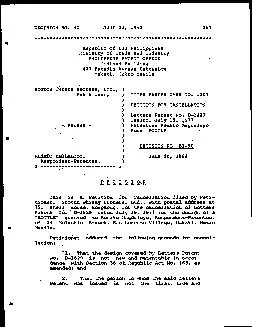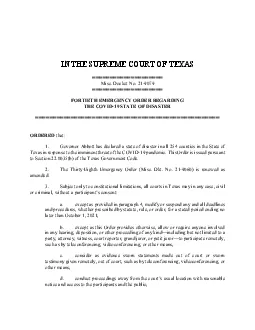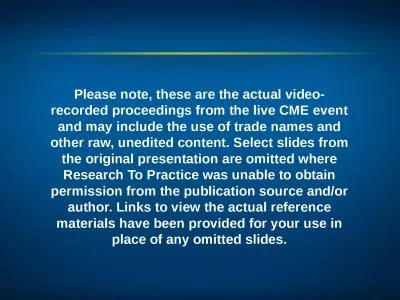PPT-Please note, these are the actual video-recorded proceeding
Author : luanne-stotts | Published Date : 2017-10-14
Moderator Neil Love MD Mollie Moran MSN CNP AOCNP Lauren C PinterBrown MD Andrew M Evens DO MSc Amy Goodrich CRNPAC Faculty Challenging Cases in NonHodgkin Lymphoma
Presentation Embed Code
Download Presentation
Download Presentation The PPT/PDF document "Please note, these are the actual video-..." is the property of its rightful owner. Permission is granted to download and print the materials on this website for personal, non-commercial use only, and to display it on your personal computer provided you do not modify the materials and that you retain all copyright notices contained in the materials. By downloading content from our website, you accept the terms of this agreement.
Please note, these are the actual video-recorded proceeding: Transcript
Download Rules Of Document
"Please note, these are the actual video-recorded proceeding"The content belongs to its owner. You may download and print it for personal use, without modification, and keep all copyright notices. By downloading, you agree to these terms.
Related Documents

